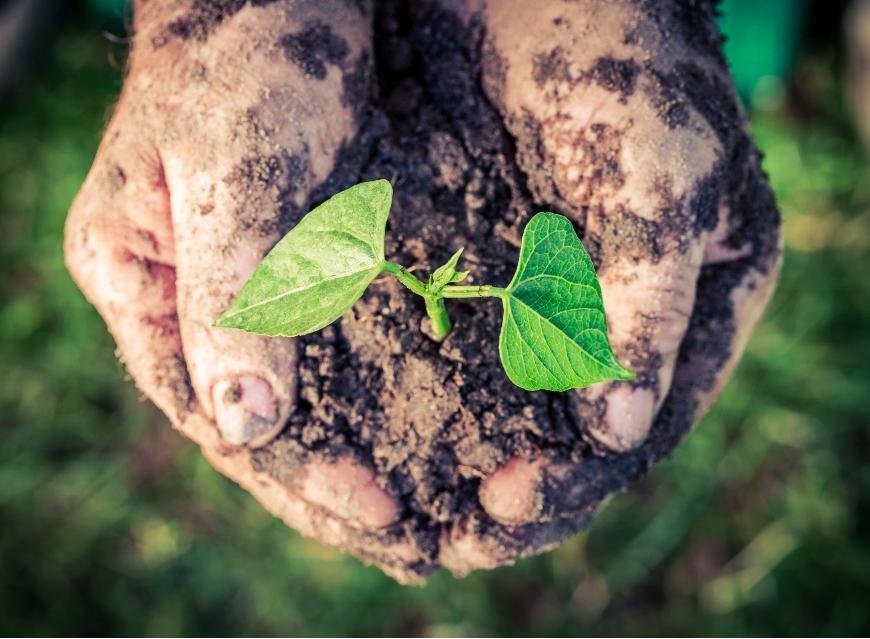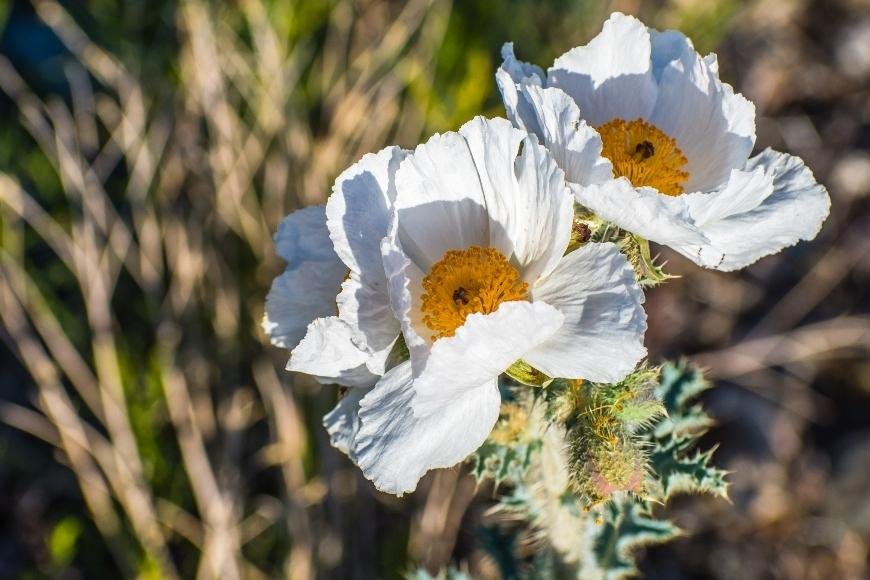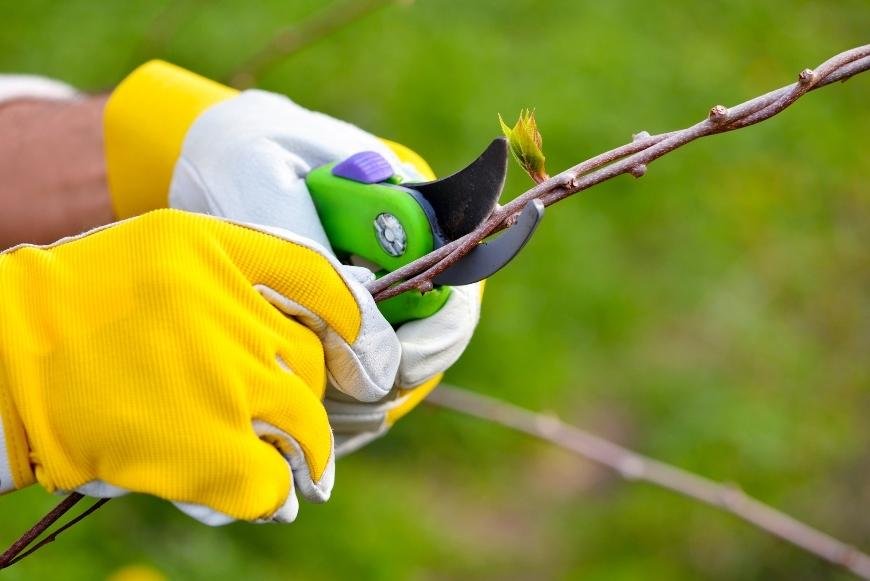How to grow Prickly Poppy?
If you're seeking to cultivate Prickly Poppy, this guide will provide comprehensive information on the various varieties of these captivating plants.

This captivating plant, comprising yellow prickly poppy, crested prickly poppy and Mexican varieties, is famed for its alluring blooms and psychoactive effects.
In this comprehensive guide, we will explore various aspects of cultivating these captivating plants. From selecting the perfect location to planting seeds in peat pots for optimal growth - we've got it all covered.
Furthermore, you'll discover essential tips on watering your plants effectively and fertilizing them with the right nutrients. We'll also delve into controlling weeds around your precious prickly poppies while managing potential pests that may hinder their development.
Finally, we will discuss harvesting techniques for those who want to make the most out of their efforts in growing Prickly Poppy. Stay tuned for a wealth of knowledge that will transform you into an expert gardener in no time!
Table of Contents:
- Selecting a Location
- Finding the Perfect Spot
- Tips for Improving Your Chosen Site
- Planting the Seeds
- Watering
- Fertilizing
- Controlling Weeds
- Pest Control
- Harvesting
- Frequently Asked Questions How to Grow Prickly Poppy?
- Conclusion
1. Selecting a Location

Growing prickly poppy, whether it's the yellow prickly poppy, crested prickly poppy, or Mexican prickly poppy, starts with choosing the right location for your plants. This beautiful and intriguing plant thrives in areas with full sun exposure and well-draining soil.
Finding the Perfect Spot
- Full Sun: Prickly poppies need at least 6-8 hours of direct sunlight per day to grow properly. Make sure you select an area that receives plenty of sunshine throughout the day.
- Well-Draining Soil: These plants prefer sandy or loamy soils that drain well. Avoid planting them in heavy clay soils as this can lead to root rot and other issues.
- Avoid Competition: Prickly poppies don't like competition from other plants, so make sure there is enough space between them and any neighboring vegetation.
Tips for Improving Your Chosen Site
If your chosen site doesn't have perfect conditions initially, don't worry. There are ways to improve its suitability for growing prickly poppies:
- Add organic matter such as compost or aged manure to improve soil structure and drainage if needed.
- If the pH of your soil is lower than 6, add lime to increase it; if higher than 7, use sulfur or peat moss to reduce it.
- Consider using raised beds or peat pots if your soil is particularly heavy and poorly draining. Once you've found the ideal spot for your prickly poppies, adjust the soil conditions to ensure their optimal growth.
Once you've selected and prepared the perfect location for your prickly poppy plants, it's time to move on to planting the seeds and caring for them as they grow. With proper care, these stunning flowers will become a unique addition to any garden or outdoor space.
Selecting the right location for your prickly poppy is essential to ensure its growth and health. Time to sow the seeds.
2. Planting the Seeds
Now that you have selected the perfect location for your prickly poppy plants, it's time to get those seeds in the ground. Proper soil preparation and seed sowing are crucial steps to ensure a successful growth journey for your yellow prickly poppy, crested prickly poppy, or Mexican prickly poppy.
Preparing the Soil
To prepare the soil for planting, start by tilling it to break up any compacted areas and improve drainage. Next, add some compost or a slow-release fertilizer into the mix to provide essential nutrients that will help your plants thrive. This is especially important if you're working with nutrient-poor soil.
Sowing Prickly Poppy Seeds
- Selecting containers: If you prefer starting seeds indoors before transplanting them outside, consider using peat pots as they can be planted directly into the ground without disturbing delicate roots during transplantation.
- Sowing depth: Sow your prickly poppy seeds about 1/4 inch deep in well-draining soil. Light is necessary for germination so don't bury them too deep.
- Gentle watering: Water gently after sowing to moisten but not flood or wash away seeds from their intended position.
- Maintain temperature: Keep indoor-started seedlings at around room temperature (65-75°F) until they sprout within two weeks of planting.
- Harden off seedlings: If you started your seeds indoors, be sure to harden them off by gradually exposing them to outdoor conditions before transplanting.
- Transplant outdoors: Once the last frost has passed and seedlings have at least two sets of true leaves, they can be transplanted into their final growing location. Space plants about 12-18 inches apart for optimal growth.
With these steps in mind, you'll set up a solid foundation for your prickly poppy plants to grow strong and healthy.
3. Watering
Proper watering is essential for the healthy growth of your prickly poppy. These plants prefer moist but not soggy soil, so it's important to strike a balance when providing water. Overwatering can lead to root rot and other issues, while underwatering may cause wilting or slow growth.
To ensure that you're giving your prickly poppies just the right amount of water, follow these tips:
- Check the soil moisture: Before watering, insert your finger about an inch into the soil near the base of the plant. If it feels dry at this depth, it's time to water.
- Avoid overhead watering: Instead of using a sprinkler or hose nozzle that sprays from above, opt for a soaker hose or drip irrigation system that delivers water directly to the roots. This will help prevent diseases caused by wet foliage and reduce evaporation loss.
- Mulch around plants: Adding mulch around your prickly poppies helps retain moisture in the soil and reduces weed competition for resources. Organic materials like straw or wood chips are excellent choices for mulching purposes.
- Maintain consistent moisture levels: While occasional fluctuations in moisture won't harm mature plants too much, young seedlings require more consistent care. Consider using peat pots when starting seeds indoors as they allow better control over humidity levels during germination and early development stages before transplanting outdoors.
In general, most varieties such as yellow prickly poppy (Papaver argemone) crested prickly poppy (Papaver dubium subsp lecoqii) and Mexican prickly poppy (Argemone mexicana) will require watering every few days during hot, dry weather or when grown in containers. However, always monitor the soil moisture levels to avoid overwatering.
By following these guidelines for proper watering techniques, you'll be well on your way to growing healthy and thriving prickly poppies that can provide a beautiful display of flowers as well as a potent harvest.
4. Fertilizing
Fertilizing your prickly poppy plants is essential for promoting healthy growth and ensuring a bountiful harvest. A nutrient-rich mix, such as a 10-10-10 or 14-14-14 combination, is necessary for encouraging strong growth and plentiful yields.
When to Fertilize
You should begin fertilizing your prickly poppies about two weeks after germination when they have developed their first set of true leaves. Continue applying fertilizer every two weeks throughout the growing season until you're ready to harvest.
How to Apply Fertilizer
- Mix the fertilizer: Follow the manufacturer's instructions on how much water-soluble fertilizer to mix with water in a watering can or sprayer.
- Fertilize evenly: Apply the diluted solution evenly around each plant, making sure not to get any on its foliage. This helps prevent burning and ensures that all parts of the root system receive an equal amount of nutrients.
- Avoid over-fertilization: Be careful not to apply too much fertilizer at once, as this can lead to nutrient imbalances and harm your plants. Stick with bi-weekly applications at recommended rates for best results.
Tips for Successful Fertilization
- If you notice signs of nutrient deficiencies (such as yellowing leaves), consider having a soil test done by a local extension office or garden center. They can help determine the specific nutrients your soil may be lacking and recommend appropriate amendments.
- Using organic fertilizers, like compost or well-rotted manure, can also help improve the overall health of your soil. These natural options release nutrients more slowly than synthetic fertilizers and can provide a steady supply of essential elements throughout the growing season.
- Remember that proper watering is just as important as fertilization for healthy plant growth. Maintaining the soil dampness, but not overly wet, is critical to keeping away root rot and other issues that can be caused by excessive watering.
By providing your prickly poppy plants with regular applications of balanced fertilizer, you'll ensure they have all the necessary nutrients for strong growth and an abundant harvest. Keep an eye on their progress throughout the season and adjust your care routine accordingly if any problems arise.
5. Controlling Weeds
Weeds can be a major issue when growing prickly poppy, as they compete with your plants for nutrients and space. It is critical to keep weeds in check if you want your prickly poppies to prosper and flourish.
A. Hand-Weeding
The most straightforward method of weed control is hand-weeding. Regularly inspecting your garden and removing any unwanted plants by hand will help prevent them from taking over your yellow prickly poppy or crested prickly poppy patch. When weeding, make sure to remove the entire root system to prevent regrowth.
B. Mulching
Mulching is another effective way to suppress weeds around your mexican prickly poppies while also conserving moisture in the soil and providing additional nutrients as organic mulch breaks down over time. Here are some suitable mulch options:
- Pine needles: These provide good coverage and allow water penetration while adding acidity to the soil, which can benefit certain varieties of prickly poppies.
- Straw or hay: Both straw and hay are readily available materials that offer excellent weed suppression properties but may require regular replenishment due to decomposition.
- Bark chips: Bark chips create an attractive layer on top of the soil surface that effectively smothers weeds without impeding water flow into the ground below.
Note: Avoid using black plastic sheeting as mulch for prickly poppies
Although black plastic sheeting can be an effective weed barrier, it is not recommended for use with prickly poppies. The plastic can cause the soil to become too hot and may lead to root damage or other issues with your plants.
6. Pest Control
Growing a healthy and thriving prickly poppy plant requires proper pest control measures. Pests such as aphids, caterpillars, and slugs can cause significant damage to your plants if left unchecked. In this section, we will discuss some organic methods for controlling these common pests.
Aphids
Aphids are small insects that feed on the sap of plants, causing leaves to curl and become discolored. To prevent aphid infestations in your mexican prickly poppy garden:
- Inspect your plants regularly for signs of aphids.
- If you spot any aphids, spray them with water or use a soft brush to remove them from the plant.
- If the aphid population is more serious, look to an insecticidal soap or neem oil solution as recommended by the manufacturer.
Caterpillars
Caterpillars can be particularly damaging to yellow prickly poppy foliage due to their voracious appetite. To protect your crested prickly poppies from caterpillar damage:
- Handpick caterpillars off the plants when you see them.
- Create a barrier around young seedlings by placing crushed eggshells or diatomaceous earth at the base of each plant.
- If necessary, apply Bacillus thuringiensis (Bt), a natural bacteria-based pesticide that targets caterpillars without harming beneficial insects like bees and ladybugs.
Slugs
Slugs are attracted to the moist environment around your prickly poppy plants and can cause significant damage by feeding on leaves and stems. To keep slugs at bay:
- Remove any debris, such as fallen leaves or peat pots, from around your plants to eliminate hiding spots for slugs.
- Create a barrier using copper tape or crushed eggshells around the base of each plant.
- If necessary, use organic slug pellets or traps according to their instructions.
Maintaining a healthy garden ecosystem with beneficial insects like ladybugs and lacewings will also help in keeping pest populations under control. By following these tips, you'll be well on your way to growing beautiful and resilient prickly poppies free from harmful pests.
7. Harvesting

Gaining the rewards of cultivating your own prickly poppy, be it yellow, crested or Mexican variety, requires proper technique. Checking the harvest is key to maximizing your plants' potential and taking advantage of their advantages.
To harvest your prickly poppies properly, follow these steps:
- Monitor seed pod development: Keep an eye on the growth of the seed pods throughout late summer and early fall. You'll want to harvest them when they are dry and brown in color.
- Select appropriate tools: To avoid injury from the plant's sharp spines while harvesting, wear gloves and use long-handled pruners or scissors for cutting.
- Cut seed pods carefully: Snip off each matured seed pod at its base without damaging other parts of the plant. This will allow it to continue growing if there are still flowers present.
- Dry harvested pods further (optional): If you live in a humid climate or want to ensure optimal drying before storage, place harvested seed pods on a tray in a well-ventilated area away from direct sunlight for about one week until completely dry.
- Store dried seeds properly: Once fully dried, store your seeds in an air-tight container such as glass jars with tight-fitting lids or sealable plastic bags. Label each container with relevant information like date of harvest and type of prickly poppy species for future reference.
With proper harvesting and storage techniques, you can enjoy the benefits of your prickly poppy plants for a long time. To get the best results, use our tips and resources to ensure that your efforts with prickly poppies are successful and rewarding.
Frequently Asked Questions How to Grow Prickly Poppy?
How do you grow prickly poppies?
To grow prickly poppies, select a sunny location with well-draining soil. Plant the seeds in early spring, about 1/4 inch deep and spaced 6-12 inches apart. Water regularly but avoid overwatering. Fertilize with a balanced fertilizer during the growing season and control weeds by hand or using mulch. Monitor for pests and harvest when seed pods are mature.
Is prickly poppy annual or perennial?
Prickly poppy (Argemone spp.) is an annual plant, meaning it completes its life cycle within one year from germination to producing seeds before dying off. Some species may reseed themselves, giving the appearance of being perennial plants.
Is prickly poppy invasive?
Some species of prickly poppy can be considered invasive due to their ability to spread rapidly in certain environments, such as Argemone mexicana which is known to invade disturbed areas like roadsides and agricultural fields. It's important to check local regulations before planting this species.
Where does prickly poppy grow?
Prickly poppies are native to North America, Central America, and parts of South America; they can also be found in other regions where they have been introduced. They typically thrive in dry habitats like deserts, grasslands, semi-desert shrublands, open woodlands,
Conclusion
The prickly poppy is an eye-catching and unusual flower that can thrive in a range of climates. With the right care, you can successfully grow your own crop of these plants for harvesting later on. By selecting an appropriate location, planting seeds correctly, watering regularly, fertilizing when needed, controlling weeds and pests as necessary and finally harvesting at the correct time you will have a successful growing experience with this amazing flower. So don't hesitate to give it a try - if you follow all the steps properly then there's no reason why you won't succeed in growing prickly poppies.


































































































































